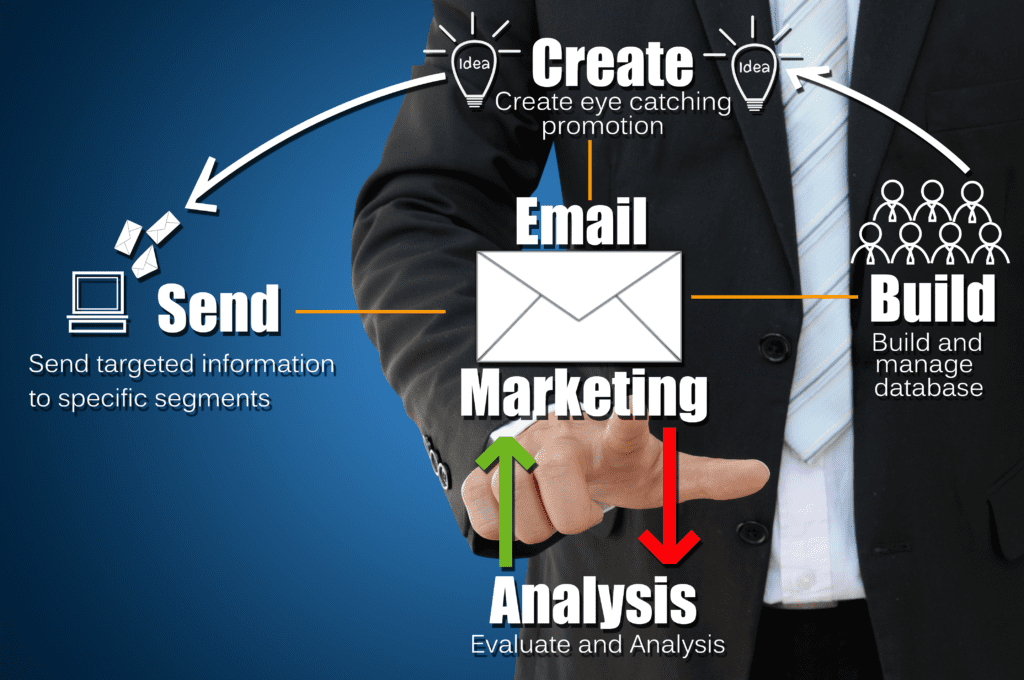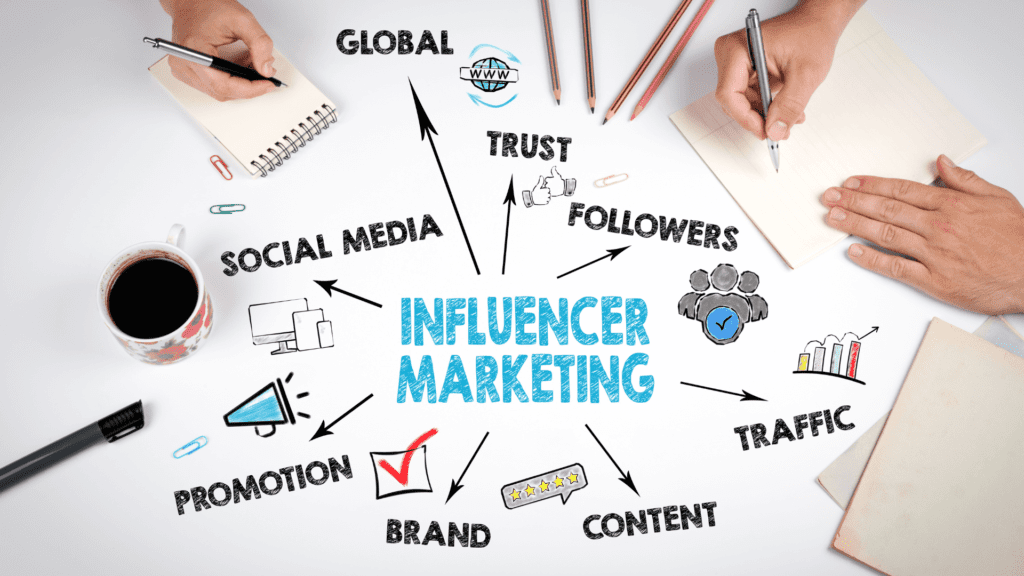Get Consultation
+91-993 -1677-785
+91-993 -1677-785
Tausif Alam
June 28, 2023

Did you know that in today’s competitive business landscape, digital marketing is a game-changer? With over 4.9 billion active internet users worldwide, harnessing the power of digital marketing has become essential for businesses to hype. In this article, we will explore the top 10 digital marketing services that can help your business succeed and grow its online presence.
In an increasingly digital world, traditional marketing methods alone are no longer sufficient to reach and engage potential customers. Here’s why digital marketing is important:
Unparalleled Reach: Digital marketing allows you to connect with a global audience, breaking geographical barriers and opening up vast market opportunities.
Targeted Approach: With precise targeting options, you can reach your ideal customers based on demographics, interests, and online behavior, maximizing your marketing efforts.
Cost-Effectiveness: Digital marketing often offers better ROI compared to traditional advertising methods, allowing you to optimize your budget and achieve better results.
Real-Time Analytics: The ability to track and analyze your marketing campaigns in real-time enables data-driven decision-making, leading to continuous improvement and better outcomes.
In this article, we will explore the top 10 digital marketing services that can help your business succeed and grow its online presence. From search engine optimization (SEO) to social media marketing and email campaigns, these services are essential for driving targeted traffic, increasing brand visibility, and boosting conversions.
Search Engine Optimization (SEO): Improve your website’s visibility on search engines and increase organic traffic through strategic optimization techniques.
Pay-Per-Click Advertising (PPC): Drive targeted traffic to your website by running targeted ads on platforms like Google Ads, Bing Ads, and social media.
Content Marketing: Create valuable and engaging content to attract and retain your target audience, positioning your business as an industry authority.
Social Media Marketing: Leverage the power of social media platforms to connect, engage, and build relationships with your audience while increasing brand awareness.
Email Marketing: Build and nurture a loyal customer base through personalized email campaigns, delivering relevant content and promotions directly to their inbox.
Influencer Marketing: Collaborate with influential individuals in your industry to reach their followers and gain credibility, increasing brand visibility and driving conversions.
Conversion Rate Optimization (CRO): Optimize your website’s user experience, design, and content to maximize conversions and improve the effectiveness of your digital marketing efforts.
Video Marketing: Utilize the popularity of videos to engage and captivate your audience, sharing valuable information, product demonstrations, and storytelling.
Analytics and Data-driven Marketing: Harness the power of data and analytics tools to track, measure, and analyze your marketing campaigns, enabling data-driven decision-making for better results.
Mobile Marketing: Optimize your marketing strategies for mobile devices, including mobile-friendly websites, mobile apps, and location-based targeting.
By implementing these top 10 digital marketing services, you can gain a competitive edge, increase your online visibility, and effectively engage with your target audience, ultimately driving growth and success for your business.

Understanding the Power of Search Engine Optimization for Business Success
In today’s digital landscape, where competition is fierce, Search Engine Optimization (SEO) has emerged as a crucial tool for businesses to establish a strong online presence. SEO refers to the process of optimizing your website to improve its visibility and ranking on search engine result pages (SERPs). Here’s why SEO is vital for your business:
Increased Visibility: With effective SEO, your website can appear higher in search engine rankings, making it more visible to potential customers who are actively searching for products or services related to your industry.
Targeted Traffic: SEO helps drive targeted organic traffic to your website, as users are more likely to click on organic search results rather than paid advertisements.
Credibility and Trust: Ranking higher in search results builds credibility and trust with users, as they perceive top-ranking websites as more authoritative and trustworthy.
Long-term Investment: SEO provides long-term benefits, as the efforts you put into optimizing your website can yield continuous results over time, often at a lower cost compared to other marketing channels.
To maximize the effectiveness of your SEO efforts, consider implementing the following key strategies and techniques for optimizing your website content:
Keyword Research: Conduct thorough keyword research to identify relevant keywords and phrases that your target audience is searching for. Utilize keyword research tools to uncover high-volume and low-competition keywords that can drive targeted traffic to your website.
On-Page Optimization: Optimize various on-page elements to make your website more search engine-friendly, including:
Title Tags: Craft unique and compelling title tags for each webpage, incorporating relevant keywords.
Meta Descriptions: Create persuasive meta descriptions that entice users to click through to your website from search results.
Header Tags: Utilize heading tags (H1, H2, etc.) to structure your content and make it more readable for both users and search engines.
URL Structure: Ensure your URLs are concise, descriptive, and contain relevant keywords.
Quality Content Creation: Develop high-quality, informative, and engaging content that aligns with your target audience’s needs and interests. Focus on creating content that provides value and answers users’ questions. Regularly update your content to keep it fresh and relevant.
Link Building: Acquire high-quality backlinks from reputable websites in your industry. Focus on natural link-building strategies, such as creating exceptional content that others naturally want to link to or engaging in guest blogging opportunities.
User Experience (UX) Optimization: Improve your website’s user experience to enhance visitor engagement and satisfaction, as well as search engine rankings. Consider factors such as website speed, mobile responsiveness, intuitive navigation, and clear calls to action.
Understanding the role of keywords, meta tags, and backlinks in SEO is essential for optimizing your website effectively:
Keywords: Keywords are the words and phrases users enter into search engines to find information. By incorporating relevant keywords throughout your website’s content, you can improve its visibility and relevance to search engines.
Meta Tags: Meta tags, including meta titles and meta descriptions, provide concise summaries of your webpage’s content. Well-optimized meta tags can entice users to click on your website’s link in search results, increasing your click-through rate.
Backlinks: Backlinks are links from other websites that point to your website. Search engines view backlinks as indicators of your website’s authority and trustworthiness. Quality backlinks from reputable websites can positively impact your search engine rankings.
Examining case studies and examples of successful SEO campaigns can provide valuable insights and inspire you to achieve similar results. Here are a few notable examples:
Company X: By implementing a comprehensive SEO strategy, including keyword research, on-page optimization, and link building, Company X increased their organic search traffic by 200% within six months.
Website Y: Through targeted content creation and optimization, Website Y achieved first-page rankings for competitive keywords, resulting in a 150% increase in organic traffic and a substantial boost in conversions.
E-commerce Store Z: E-commerce Store Z focused on optimizing their product pages with relevant keywords, creating compelling meta descriptions, and building high-quality backlinks. As a result, their website experienced a 300% increase in organic search visibility and a significant rise in online sales.
These case studies highlight the transformative power of SEO when implemented strategically and consistently.

Unlocking the Potential of Pay-Per-Click Advertising for Business Growth
Pay-Per-Click (PPC) advertising is a powerful digital marketing strategy that allows businesses to display ads on various platforms and pay only when users click on those ads. Here’s why PPC advertising is beneficial for businesses:
Immediate Results: Unlike organic methods, PPC advertising delivers instant visibility and immediate results. Ads are displayed to users searching for specific keywords or browsing relevant websites, ensuring targeted exposure.
Precise Targeting: PPC campaigns enable precise targeting based on factors such as location, demographics, interests, and search intent, ensuring your ads reach the right audience at the right time.
Budget Control: With PPC, you have full control over your budget. Set daily or monthly limits and adjust bids to optimize your spending while maximizing the return on investment (ROI).
Measurable ROI: PPC platforms provide robust tracking and analytics tools, allowing you to measure the success of your campaigns and calculate the exact ROI generated from your advertising spend.
Google Ads: Google Ads is one of the most popular PPC advertising platforms, reaching billions of users through its vast network. Key features and benefits include:
Keyword Targeting: Advertise on Google search results by bidding on keywords relevant to your business.
Display Network: Extend your reach by displaying ads on websites within Google’s display network, targeting specific audiences or placements.
Remarketing: Re-engage users who have previously visited your website, increasing the likelihood of conversion.
Social Media Advertising: Social media platforms offer powerful PPC advertising options to reach specific target audiences. Some notable platforms include:
Facebook Ads: Leverage detailed targeting options based on demographics, interests, behaviors, and connections.
Instagram Ads: Tap into Instagram’s visually engaging platform to showcase products and services to a highly engaged user base.
LinkedIn Ads: Reach professionals and B2B audiences with targeted ads based on job titles, industries, and company size.
To create effective PPC campaigns that drive results, consider implementing the following tips:
Keyword Research: Conduct thorough keyword research to identify relevant keywords that align with user search intent. Use keyword research tools to discover high-value keywords with reasonable competition.
Compelling Ad Copy: Craft attention-grabbing and persuasive ad copy that highlights unique selling points, benefits, and offers. Use compelling headlines, concise descriptions, and strong calls to action (CTAs).
Landing Page Optimization: Create dedicated landing pages that align with your ad copy and provide a seamless user experience. Optimize landing pages for fast loading speed, clear messaging, and prominent CTAs to maximize conversions.
Ad Extensions: Take advantage of ad extensions to provide additional information and increase visibility. Extensions such as site links, call extensions, and location extensions enhance the performance and visibility of your ads.
Testing and Optimization: Continuously test different ad variations, keywords, and targeting options to identify what works best for your campaigns. Optimize your campaigns based on data-driven insights and make adjustments to improve performance.
Tracking and analyzing campaign performance is crucial to optimize your PPC efforts. Consider the following aspects:
Conversion Tracking: Set up conversion tracking to measure the specific actions users take on your websites, such as purchases, form submissions, or sign-ups. This allows you to attribute conversions to specific campaigns and optimize accordingly.
Analytics Tools: Utilize analytics tools like Google Analytics to gain in-depth insights into user behavior, including bounce rate, time on site, and pages visited. Analyze this data to identify areas for improvement and refine your campaigns.
A/B Testing: Conduct A/B testing to compare different elements of your campaigns, such as ad variations, landing page designs, or targeting options. Test one element at a time to isolate variables and make informed decisions based on data.
Performance Reports: Regularly review performance reports provided by your PPC platform. Analyze metrics such as click-through rate (CTR), cost per click (CPC), conversion rate, and return on ad spend (ROAS). Identify trends, opportunities, and areas for optimization.
By closely tracking and analyzing your PPC campaign performance, you can make data-driven decisions, refine your strategies, and maximize the effectiveness of your advertising budget.

Harnessing the Potential of Content Marketing for Business Growth
Content marketing is a strategic approach to marketing that involves creating and distributing valuable, relevant, and consistent content to attract and engage a target audience. Here’s why content marketing holds significant importance for businesses:
Building Brand Awareness: Content marketing allows businesses to showcase their expertise, knowledge, and unique value propositions, helping to build brand awareness and establish credibility in the market.
Enhancing Audience Engagement: By delivering valuable and relevant content, businesses can engage their target audience, foster relationships, and encourage interaction and feedback.
Driving Website Traffic: Well-executed content marketing strategies can drive organic traffic to a business’s website through search engine optimization (SEO) and social media sharing.
Boosting Conversions: Quality content helps educate and inform potential customers, influencing their decision-making process and ultimately leading to higher conversion rates.
Content marketing encompasses various formats and channels. Here are a few popular types of content used in effective marketing strategies:
Blog Posts and Articles: Written content in the form of blog posts and articles allows businesses to provide valuable information, insights, and solutions to their target audience.
Videos: Engaging and visually appealing videos can effectively convey messages, demonstrate products or services, and create a memorable connection with the audience.
Infographics: Infographics combine data, statistics, and visual elements to present complex information in a visually appealing and easily digestible format.
Ebooks and Whitepapers: Comprehensive and in-depth resources such as ebooks and whitepapers can showcase expertise, provide detailed insights, and generate leads.
Podcasts: Audio-based content in the form of podcasts allows businesses to share industry expertise, conduct interviews, and engage with their target audience on the go.
To create valuable and engaging content that resonates with your audience, consider implementing the following strategies:
Understanding Your Audience: Conduct thorough research to understand your target audience’s needs, preferences, pain points, and interests. Tailor your content to address their specific challenges and provide relevant solutions.
Storytelling: Use storytelling techniques to make your content more relatable, emotional, and memorable. Craft narratives that captivate and resonate with your audience, creating a deeper connection.
Consistency and Frequency: Maintain a consistent publishing schedule to keep your audience engaged. Regularly share fresh and relevant content to build anticipation and establish your brand as a reliable source of information.
Visual Appeal: Incorporate visually appealing elements such as images, videos, and infographics to enhance the overall aesthetics and engagement of your content.
Calls-to-Action (CTAs): Include clear and compelling CTAs to guide your audience towards desired actions, such as subscribing to a newsletter, downloading a resource, or making a purchase.
Examining successful content marketing campaigns can provide valuable insights and inspiration. Here are a few noteworthy case studies:
Company X’s Blog: By consistently publishing informative blog posts that addressed their target audience’s pain points, Company X witnessed a 300% increase in website traffic and a significant rise in lead generation.
Video Campaign by Brand Y: Brand Y created a series of engaging and shareable videos that showcased their products’ unique features and benefits. This resulted in a 200% increase in brand awareness and a substantial boost in social media engagement.
Infographic Strategy of Business Z: Business Z leveraged visually compelling infographics to simplify complex industry concepts and statistics. This led to widespread sharing, increased website traffic, and enhanced brand visibility.
These case studies demonstrate how effective content marketing strategies can drive tangible results and contribute to business growth.

Unleashing the Potential of Social Media Marketing for Business Growth
Social media marketing is a strategic approach to promoting businesses and their products or services through various social media platforms. Here’s why social media marketing has a significant impact on businesses:
Wide Audience Reach: Social media platforms have billions of active users, providing businesses with an extensive pool of potential customers to connect with.
Enhanced Brand Visibility: Leveraging social media allows businesses to increase brand visibility, establish an online presence, and reach a wider audience than traditional marketing channels.
Engagement and Interaction: Social media facilitates direct engagement with customers, enabling businesses to build meaningful relationships, receive feedback, and address inquiries promptly.
Targeted Advertising: Social media platforms offer advanced targeting options, allowing businesses to reach specific demographics, interests, and behaviors, and even retarget website visitors.
Facebook: With its massive user base, Facebook appeals to a broad range of demographics, making it suitable for businesses targeting diverse audiences.
Instagram: Known for its visually appealing content, Instagram attracts a younger audience and is ideal for businesses in industries such as fashion, travel, and food.
Twitter: Twitter is a platform for real-time conversations and trending topics, making it valuable for businesses looking to engage with an active and informed audience.
LinkedIn: LinkedIn caters primarily to professionals and B2B audiences, making it an excellent platform for businesses in the professional services, recruitment, or corporate sectors.
YouTube: As the world’s second-largest search engine, YouTube is a video-centric platform that provides businesses with opportunities to showcase their expertise, educate audiences, and reach a vast user base.
To create engaging social media content that captures the attention of your target audience, consider the following tips:
Know Your Audience: Understand the preferences, interests, and pain points of your target audience to tailor your content to their needs and preferences.
Visual Appeal: Utilize eye-catching images, videos, infographics, and visually appealing designs to make your content stand out in users’ feeds.
Compelling Captions: Craft compelling and concise captions that complement your visual content and entice users to engage or take action.
Variety of Content: Experiment with different content formats such as images, videos, GIFs, polls, quizzes, or user-generated content to keep your audience engaged and entertained.
Consistency and Frequency: Maintain a consistent posting schedule to stay top-of-mind and ensure regular interaction with your audience.
Social media advertising can significantly enhance the effectiveness of your social media marketing efforts. Consider the following strategies:
Define Your Objectives: Clearly define your advertising goals, whether it’s driving website traffic, increasing brand awareness, generating leads, or boosting sales.
Audience Targeting: Utilize the targeting options available on social media platforms to reach your desired audience based on demographics, interests, behaviors, and retargeting.
Compelling Ad Copy and Creative: Craft compelling ad copy and creative visuals that align with your brand’s messaging and resonate with your target audience.
A/B Testing: Experiment with different ad variations, including different visuals, ad copy, call-to-action buttons, and targeting options. Analyze the results and optimize your campaigns based on data-driven insights.
Monitoring and Optimization: Regularly monitor the performance of your social media ads, including click-through rates (CTR), engagement, conversions, and return on ad spend (ROAS). Make adjustments and optimizations based on the data to improve results.
By leveraging social media advertising effectively, businesses can amplify their reach, target specific audiences, and achieve better results from their social media marketing efforts.

Unlocking the Potential of Email Marketing for Business Success
Email marketing is a powerful digital marketing strategy that involves sending targeted emails to a group of individuals who have willingly subscribed to receive updates, promotions, or valuable content from a business. Here’s why email marketing is an effective communication tool:
Direct and Personalized: Emails allow businesses to communicate directly with their audience in a personalized manner, delivering tailored messages that resonate with subscribers.
High Reach and Engagement: Email boasts one of the highest engagement rates among digital marketing channels, providing an opportunity to connect with a large number of subscribers.
Conversion-Focused: Email marketing enables businesses to nurture leads, build relationships, and drive conversions by delivering relevant and compelling content directly to subscribers’ inboxes.
To build a strong email list and effectively segment your subscribers, consider implementing the following tips:
Opt-in Forms and Lead Magnets: Place opt-in forms strategically on your website to encourage visitors to subscribe. Offer valuable lead magnets such as ebooks, guides, or exclusive content to incentivize sign-ups.
Segmentation Based on Interests: Segment your email list based on subscriber interests, preferences, or demographics. This allows you to deliver more targeted and relevant content to specific segments of your audience.
Behavioral Segmentation: Segment subscribers based on their behavior, such as purchase history, engagement with previous emails, or website activity. This helps you tailor your messages to their specific actions and preferences.
Preference Center: Provide subscribers with the option to customize their email preferences. Allow them to choose the types of content they wish to receive, the frequency of emails, and their preferred communication channels.
To create compelling email campaigns that engage subscribers and drive results, follow these best practices:
Attention-Grabbing Subject Lines: Craft compelling subject lines that pique curiosity, create urgency, or offer value. A well-crafted subject line increases the chances of your emails being opened.
Personalization: Use subscriber data to personalize your emails. Address subscribers by their name and tailor the content to their preferences or past interactions with your brand.
Clear and Concise Content: Keep your emails concise and easy to scan. Use clear headings, bullet points, and formatting to make the content easily digestible.
Call-to-Action (CTA): Include a clear and prominent CTA that directs subscribers to take the desired action. Make it visually appealing and ensure it stands out within the email.
Mobile-Optimized Design: Design your emails to be mobile-friendly, as a significant portion of subscribers access emails on their mobile devices. Ensure the email renders properly on different screen sizes.
Let’s explore a few examples of successful email marketing campaigns:
Company X’s Personalized Recommendations: Company X sends personalized product recommendations based on subscriber preferences and past purchases. This tailored approach resulted in a significant increase in click-through rates and conversions.
Brand Y’s Exclusive Offers: Brand Y regularly sends exclusive offers and discounts to its email subscribers. By creating a sense of exclusivity, they have successfully generated increased sales and customer loyalty.
Business Z’s Engaging Newsletters: Business Z sends informative and engaging newsletters to their subscribers, providing industry insights, tips, and valuable content. This approach has helped them establish themselves as a trusted resource and build long-lasting relationships with their audience.
These examples demonstrate how effective email marketing campaigns can drive engagement, conversions, and customer loyalty.

Harnessing the Power of Influencer Marketing for Business Growth
Influencer marketing is a digital marketing strategy that involves partnering with influential individuals in your industry or niche to promote your products or services to their engaged audience. Here’s why influencer marketing offers significant benefits for businesses:
Enhanced Credibility and Trust: Influencers have built a loyal following and established credibility in their respective niches. When they endorse your brand, it helps to build trust among their audience, leading to increased credibility for your products or services.
Extended Reach and Exposure: By collaborating with influencers, businesses can tap into their existing audience, reaching a wider and more targeted demographic. This exposure can significantly boost brand visibility and generate new leads.
Authentic Content Creation: Influencers are skilled content creators who understand their audience’s preferences. Their content featuring your brand can be authentic, relatable, and engaging, resonating with their followers and increasing brand affinity.
To find relevant influencers who align with your target audience, consider the following steps:
Define Your Target Audience: Understand your target audience’s demographics, interests, and preferences to identify influencers who cater to the same or similar audience.
Research Influencers in Your Niche: Utilize social media platforms, influencer directories, or specialized tools to discover influencers who are active in your industry or niche.
Evaluate Influencer Relevance: Assess the influencer’s content, engagement rates, audience demographics, and overall brand alignment to determine their suitability for your brand.
Consider Micro-Influencers: Don’t overlook micro-influencers who may have smaller follower counts but can offer highly engaged and niche-specific audiences that align with your target market.
When collaborating with influencers, implement the following strategies and techniques to maximize your ROI:
Establish Clear Objectives: Define your campaign goals, whether it’s increasing brand awareness, driving sales, or expanding your social media following. This clarity will guide your influencer selection and campaign execution.
Build Authentic Relationships: Approach influencers as partners rather than mere endorsers. Foster genuine relationships by engaging with their content, providing value, and understanding their creative process.
Set Clear Expectations: Clearly communicate your expectations, campaign deliverables, and desired messaging to influencers. Align key details such as content format, posting schedule, and disclosure requirements.
Track Performance and ROI: Establish key performance indicators (KPIs) to measure the success of your influencer campaigns. Monitor metrics such as engagement rates, website traffic, conversions, and sales attributed to influencer-driven efforts.
Influencer marketing offers businesses a unique opportunity to leverage the reach, credibility, and content-creation skills of influential individuals. By identifying relevant influencers, developing effective collaboration strategies, and measuring campaign ROI, businesses can harness the potential of influencer marketing to achieve their commercial objectives. Start exploring influencer partnerships today and witness the impact they can have on your brand’s growth.

Maximizing Website Conversions for Business Success
Conversion Rate Optimization (CRO) is the practice of improving your website or landing page to increase the percentage of visitors who take desired actions, such as making a purchase, filling out a form, or subscribing to a newsletter. Here’s why CRO is significant in maximizing website conversions:
Optimized User Experience: CRO focuses on creating a seamless and intuitive user experience, removing barriers and friction that may prevent visitors from converting.
Increased ROI: By optimizing your conversion funnel, you can improve the return on investment (ROI) of your digital marketing efforts, as a higher conversion rate translates into more valuable actions taken by visitors.
Data-Driven Decision Making: CRO relies on data analysis and insights to identify areas for improvement, allowing businesses to make informed decisions based on user behavior and preferences.
To analyze user behavior and optimize landing pages for better conversion rates, consider the following techniques:
Heatmap Analysis: Use heatmap tools to visualize user interactions, such as click patterns, scroll depth, and mouse movement. This helps identify areas of interest and potential friction points on your landing pages.
User Surveys and Feedback: Implement user surveys and feedback forms to gain insights into visitor preferences, pain points, and suggestions for improvement. This qualitative data can inform your optimization efforts.
Conversion Funnel Analysis: Analyze your conversion funnel to identify drop-off points where visitors abandon the conversion process. Optimize these stages by addressing concerns, simplifying forms, or improving the value proposition.
Usability Testing: Conduct usability tests to observe how users navigate and interact with your landing pages. This provides valuable insights into usability issues, confusing elements, or areas where improvements can be made.
A/B testing is a key CRO strategy that involves comparing two versions of a webpage or element to determine which performs better in terms of conversion rate. Here are some other effective CRO strategies:
Clear Call-to-Actions (CTAs): Ensure your CTAs are prominently displayed, visually appealing, and clearly communicate the desired action. Experiment with different copy, colors, and placements to optimize their effectiveness.
Simplified Forms: Streamline your forms by reducing the number of fields and minimizing friction. Only ask for essential information, and consider implementing progress indicators or inline validations to enhance the user experience.
Social Proof and Trust Signals: Incorporate social proof elements, such as customer testimonials, reviews, trust badges, or influencer endorsements, to build trust and credibility, encouraging visitors to convert.
Personalization: Leverage personalization techniques to tailor your messaging and offers to specific segments of your audience. Use dynamic content or targeted recommendations based on user preferences or browsing history.
Let’s explore some real-life examples of businesses successfully improving their conversion rates:
Company X’s Landing Page Redesign: By analyzing user behavior and conducting A/B tests, Company X redesigned their landing page, optimizing the layout, improving the CTA placement, and simplifying the form. This resulted in a 30% increase in conversions.
Brand Y’s A/B Testing of Headlines: Brand Y conducted A/B tests on their homepage headlines, experimenting with different messaging and value propositions. They discovered that a more benefit-oriented headline led to a 15% uplift in conversions.
Business Z’s Social Proof Implementation: Business Z integrated customer testimonials and reviews on their product pages, highlighting the positive experiences of their satisfied customers. This increased trust and credibility, leading to a 20% boost in conversions.
In conclusion, Conversion Rate Optimization (CRO) plays a crucial role in maximizing website conversions. By analyzing user behavior, optimizing landing pages, conducting A/B tests, and implementing effective CRO strategies, businesses can enhance their conversion rates and achieve their commercial objectives. Start optimizing your website today and unlock the full potential of your digital marketing efforts.

Harnessing the Potential of Video for Business Growth
Video marketing has become an indispensable tool in the digital marketing landscape, captivating audiences and driving business growth. Here’s why video marketing is gaining popularity:
Visual Appeal: Videos combine visuals, audio, and storytelling to create an immersive and engaging experience that resonates with viewers.
Higher Engagement: Videos have higher engagement rates compared to other forms of content, capturing attention and encouraging viewers to interact and share.
Versatility: Video content can be used across various platforms and formats, such as product demos, tutorials, testimonials, and brand storytelling, catering to different audience preferences.
When it comes to hosting and sharing videos, several platforms offer a wide reach and engagement potential. Consider the following platforms:
YouTube: As the largest video-sharing platform, YouTube offers vast exposure and the opportunity to reach a global audience. It provides robust analytics, monetization options, and easy embedding on websites and social media.
Social Media: Platforms like Facebook, Instagram, Twitter, and LinkedIn provide native video hosting and sharing capabilities. They leverage their vast user base and algorithms to boost video visibility and encourage engagement.
Vimeo: Vimeo caters to a creative community and offers a higher-quality video experience. It provides advanced privacy settings, customization options, and professional-grade analytics.
To create compelling and shareable video content, consider the following tips:
Know Your Audience: Understand your target audience’s preferences, interests, and pain points. Tailor your video content to resonate with their needs and aspirations.
Tell a Story: Use storytelling techniques to create a narrative that captivates viewers and evokes emotions. Connect with your audience on a deeper level by weaving a compelling story around your brand or message.
Keep it Concise: Attention spans are shorter in the digital age, so aim for concise videos that deliver your message effectively within a shorter timeframe. Focus on the key points and avoid unnecessary fluff.
Quality Matters: Invest in good production quality, including clear visuals, high-quality audio, and professional editing. A polished video reflects positively on your brand and enhances viewer engagement.
Add Subtitles: Incorporate subtitles or captions to make your videos more accessible and viewer-friendly. This allows people to watch your videos without sound and caters to a wider audience.
Call-to-Action (CTA): End your videos with a clear and compelling CTA that directs viewers to take the desired action, such as visiting your website, subscribing to your channel, or making a purchase.
Let’s explore some success stories of businesses that have leveraged video marketing to achieve impressive results:
Brand X’s Product Demo Videos: Brand X created engaging product demonstration videos, showcasing the features and benefits of their offerings. These videos not only increased brand awareness but also led to a 30% boost in conversions.
Company Y’s Customer Testimonial Videos: Company Y collected customer testimonials and transformed them into impactful video testimonials. These videos built trust, credibility, and social proof, resulting in a 50% increase in customer inquiries and conversions.
Business Z’s Brand Storytelling Videos: Business Z crafted compelling brand storytelling videos that connected with their target audience on an emotional level. These videos generated a viral buzz, attracting millions of views and significantly expanding brand reach.
These success stories demonstrate the effectiveness of video marketing in driving brand awareness, engagement, and conversions.

Driving Business Success through Informed Decision-making
Data-driven marketing has revolutionized the way businesses operate by enabling informed decision-making. Here’s why data-driven marketing is crucial:
Insightful Decision-making: By leveraging data, businesses can gain valuable insights into customer behavior, preferences, and trends, allowing them to make informed marketing decisions.
Targeted Marketing: Data-driven marketing helps identify the right target audience and personalize marketing campaigns for maximum impact and relevance.
Optimized ROI: By analyzing data, businesses can optimize their marketing strategies and allocate resources more effectively, resulting in improved return on investment (ROI).
To track website performance and user behavior, utilize the following analytics tools:
Google Analytics: A widely used and comprehensive analytics tool that provides in-depth insights into website traffic, user behavior, conversion rates, and more.
Heatmap Tools: Tools like Hotjar and Crazy Egg offer heatmaps that visualize user interactions, helping identify popular areas on web pages and optimizing their design.
User Behavior Analytics: Tools such as Mixpanel and Kissmetrics provide detailed analysis of user behavior, allowing businesses to understand how users navigate their websites and engage with content.
To improve marketing strategies, focus on measuring and analyzing the following key metrics:
Conversion Rate: Measure the percentage of website visitors who take desired actions, such as making a purchase, filling out a form, or subscribing to a newsletter.
Bounce Rate: Analyze the percentage of visitors who leave the website without engaging further. A high bounce rate indicates a need for website optimization.
Traffic Sources: Understand where your website traffic is coming from—whether it’s organic search, social media, referrals, or paid advertising—to allocate resources effectively.
Customer Lifetime Value (CLV): Determine the value a customer brings to your business over their lifetime. This metric helps optimize marketing strategies to maximize long-term profitability.
Click-through Rate (CTR): Measure the percentage of users who click on a specific link or call to action. CTR helps evaluate the effectiveness of marketing campaigns and optimize messaging.
Engagement Metrics: Track metrics like time on page, page views per session, and social media interactions to assess audience engagement and identify opportunities for improvement.
Let’s explore some case studies that illustrate the effectiveness of data-driven marketing:
Company X’s Email Campaign Optimization: By analyzing customer data, Company X identified customer segments with different preferences. They tailored their email campaigns accordingly, resulting in a 40% increase in email open rates and conversions.
Business Y’s Ad Spend Optimization: Business Y analyzed data from various advertising channels to determine the most effective platforms for their target audience. By reallocating their ad spend, they achieved a 20% increase in ROI.
Brand Z’s Personalization Strategy: Brand Z implemented a personalized marketing approach by leveraging customer data and behavioral patterns. This led to a significant increase in customer engagement, loyalty, and repeat purchases.
These case studies demonstrate the power of data-driven marketing in driving meaningful results and unlocking the full potential of marketing efforts.

Digital marketing has become an indispensable tool for businesses in today’s competitive landscape. Here’s a quick recap of its importance:
Reach and Visibility: Digital marketing enables businesses to reach a vast online audience and increase their brand visibility.
Targeted Marketing: By leveraging various digital marketing services, businesses can precisely target their ideal audience, resulting in higher conversion rates.
Cost-effectiveness: Compared to traditional marketing channels, digital marketing offers cost-effective solutions with measurable results.
Customer Engagement: Digital marketing fosters meaningful engagement with customers, allowing businesses to build strong relationships and brand loyalty.
Throughout this blog post, we explored the top 10 digital marketing services that can help businesses succeed and grow their online presence. Let’s recap them briefly:
Search Engine Optimization (SEO): Boosting organic visibility in search engines through optimization techniques.
Pay-Per-Click Advertising (PPC): Driving targeted traffic through paid ads on search engines and social media platforms.
Content Marketing: Creating valuable and engaging content to attract and retain customers.
Social Media Marketing: Leveraging social media platforms to engage with the target audience and build brand awareness.
Email Marketing: Using email campaigns to communicate with customers, nurture leads, and drive conversions.
Influencer Marketing: Collaborating with influential individuals to promote products or services to their followers.
Conversion Rate Optimization (CRO): Optimizing website elements to maximize conversions and improve user experience.
Video Marketing: Utilizing videos to engage and captivate the audience on platforms like YouTube and social media.
Analytics and Data-driven Marketing: Harnessing data to make informed marketing decisions and optimize strategies.
Mobile Marketing: Tailoring marketing efforts for mobile devices, including mobile apps, responsive websites, and SMS campaigns.
Now that you’re familiar with the top digital marketing services, it’s time to take action and implement them to enhance your business’s online presence and drive growth. Consider the following steps:
Evaluate Your Business Goals: Determine which digital marketing services align best with your business objectives and target audience.
Develop a Comprehensive Strategy: Create a holistic digital marketing strategy that incorporates multiple services to maximize their collective impact.
Allocate Resources Effectively: Allocate resources such as budget, time, and personnel to each digital marketing service based on their potential returns.
Monitor and Adjust: Regularly monitor the performance of your digital marketing campaigns, make data-driven adjustments, and optimize for better results.
To further support your digital marketing endeavors, here are some additional resources you can explore:
E-books and Guides: Download our comprehensive e-books and guides on digital marketing strategies, SEO techniques, and social media advertising.
Webinars and Online Courses: Join our webinars or enroll in online courses to deepen your knowledge and stay updated on the latest trends.
Engage in Discussion: Join our online community to connect with like-minded professionals, ask questions, and share experiences.
Remember, implementing digital marketing services is an ongoing process that requires continuous learning and adaptation. Stay proactive, embrace new opportunities, and watch your business thrive in the digital landscape.
we are available 24/7 to answer any questions or concerns you may have about our services or your business growth.
Sign up for our newsletter to get updated information, news, and free insight.
We specialize in providing the best solutions to help your business thrive and achieve new levels of success.
we are available 24/7 to answer any questions or concerns you may have about our services or your business growth.
Web Development & Digital Marketing Agency
Copyright © 2024. All rights reserved.